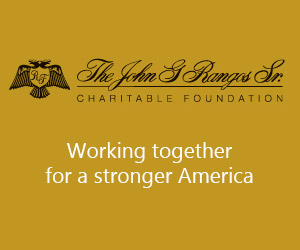Penelope Gandhi Mission: Sacred Art of Weaving Revived in Crete
Professors coexist with shepherds at the University of the Μountains
By Kelly Fanarioti
Imagine a university where teaching takes place in the countryside, and professors are scientists from all over the world, but also craftsmen, livestock breeders, farmers and students of mountain villages. The aim is none other than the study and preservation of the way of life of mountain communities.

Making natural silk
The vision of such a university came true in 2007 by the former Rector of the University of Crete and Professor of Ophthalmology, Ioannis Pallikaris. The University of the Mountains, as it is called, is a voluntary, non-profit and non-subsidized organization, an official member of the United Nations (UN) – Mountain Partnership, FAO.
Through mutual voluntary teaching between scientists, livestock breeders, farmers and pupils from urban areas, the protection of centuries-old traditions and production methods, the continuous medical support of the inhabitants, the discouragement of the abandonment of villages and the bridging of scientific with experiential knowledge are achieved.

One of the few reamaining weavers teaching the new students
The deep belief of all the participants who exchange knowledge is that mountain life in its entirety, obeys ancient relationships between nature and people, social relationships and ways of deriving the means of life, through the revival of economic resources, preventing the abandonment of villages, not depleting natural wealth, the balance of water, wildlife, forests, animals and birds, and development of a small-scale-high value economy.

Barbara with students at the Heraklion Archeological Museum
Mission Penelope Gandhi
One of the pioneering initiatives of the University of the Mountains is called “Mission Penelope Gandhi,” and its purpose is to revive the art of weaving throughout Greece
Barbara Terzaki- Pallikari, also known as the “Priestess of Cretan Weaving Art,” inspired this particular action.
But what do Odysseus’ faithful wife and the fighter for the rights of all people have to do with it?
“Penelope, in an attempt to get rid of the suitors who constantly besieged her, declared that she would marry only when she finished the weaving that worked on her loom all day and destroyed at night. The Indian leader, on the other hand, deeply believed that weaving on the loom was perhaps the only means to make his people self-sufficient. To set an example and meet his own needs, he waved his own threads,” Mrs Terzaki-Pallikari explains.

Barbara Terzaki- Pallikari with a student
The purpose of the mission is to preserve and disseminate the sanctity of the art of weaving in Crete that counts almost 5,000 years.
“The long and indestructible legacy of weaving has played an important role in the folk art of Crete and generally in Greece. A sample is the female figure with raised arms found in Minoan figurines, which has a long history. It starts from prehistoric times and remains firm in its attitude to this day. Only the symbols she keeps change, depending on the religion of the time.”
Each woven fabric is created by hand with a technique known only to Cretan women and is dyed with flowers of nature. Once completed, the woven fabrics go to various museums around the world and private collections. Mrs Terzaki – Pallikari’s goal is to introduce women, regardless of their age or profession, to weaving.
“The teaching of art by the experienced skilled weavers of Crete to the new generation and awareness raising among young people in general is one of our goals. Through this process a small economy that would make them feel safe and happy can be created,’’ she adds, claiming that another goal is the inclusion of Cretan weaving art in the national catalogue of intangible UNESCO cultural heritage.

A collection of plants from where natural paint is extracted
According to her, the great achievement of this “Penelope Gandhi Mission” was that by throwing the weight on the revival, the team which is supported by weavers and academic personalities from Greece and abroad, was able to restart two important activities to obtain raw materials that had disappeared. One is flax and the other is silk. Now flax in collaboration with the TEI of Crete – School of Agriculture, is sown and harvested every year and silkworms are also bred.
In 2012, the “Penelope Gandhi Mission” presented a major exhibition at St. Mark’s Basilica in Heraklion, Crete, during which weavers from the four prefectures of Crete worked on four looms. The following year, something similar took place at the Benaki Museum in Athens, with a daily presence of women who traveled throughout the exhibition from Crete to weave daily surrounded by valuable exhibits.
The vision of Ioannis Pallikaris and his wife has attracted the interest of foreign universities and conferences, while there are many young people who seek to learn about the art of weaving and life in mountain villages.
The journey of knowledge transmission, however, does not stop here but is going to be enriched and expanded to even more areas of Greece and the world.











0 comments